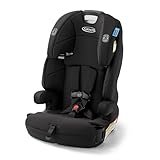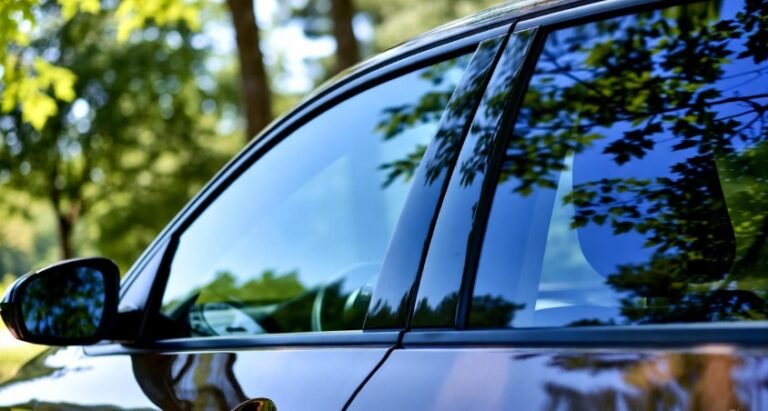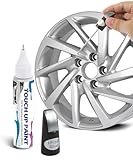2 Smart Facts About Car Wipers
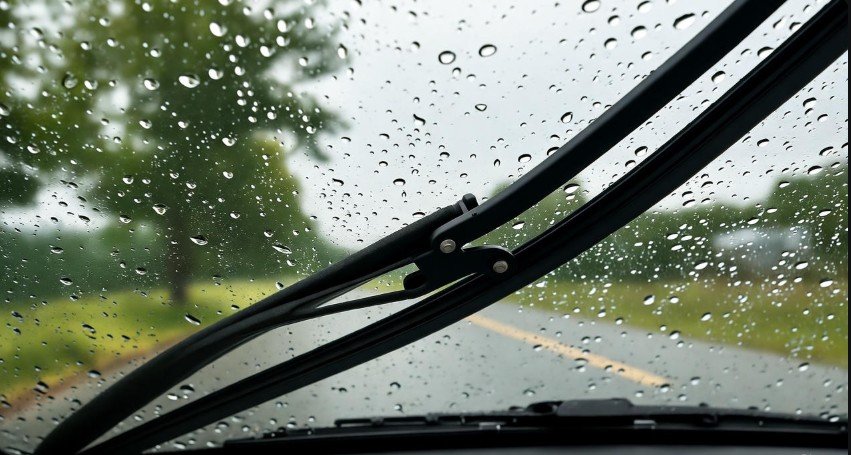
Discover two surprising facts about your car’s wipers that will make you appreciate their essential role in safe driving. Learn how these seemingly simple components are smarter than you think!
Key Takeaways
- Understand the dual function of modern car wiper systems.
- Learn how wiper fluid composition prevents freezing.
- Discover the advanced technology behind wiper blade design.
- Recognize the importance of maintaining wiper blades for visibility.
- Gain insights into how wiper systems enhance driving safety.
- Appreciate the engineering that makes your car’s wipers so effective.
When you think about what makes your car safe and reliable, you might first consider brakes, tires, or even airbags. But what about those unsung heroes that clear your windshield during a downpour or a dust storm? We’re talking about your car’s wipers. They’re so common, so integrated into our daily driving, that we often forget they’re even there until we need them. Yet, the system behind those sweeping blades is more advanced and crucial than many drivers realize. You might be surprised to learn just how smart your car’s wiper setup truly is. Let’s dive into two incredibly smart facts about car wipers that you’ll definitely love knowing.
Understanding the Dual Nature: Why Most Cars Have Two Wipers

It’s a common sight on roads across the USA: cars equipped with two windshield wipers. While some trucks and larger vehicles might sport a single, hefty wiper, the vast majority of passenger cars and SUVs come with a pair. This isn’t just for symmetry; there are significant functional and safety reasons behind this design choice. Understanding this dual nature can help you appreciate the engineering that goes into ensuring clear visibility for you, no matter the weather.
The Importance of Two Wipers for Optimal Visibility
The primary reason for having two wipers is to cover the largest possible area of your windshield. A single wiper, even a large one, would leave significant blind spots, especially on wider windshields common in modern vehicles. These blind spots are dangerous, as they can obscure oncoming traffic, pedestrians, cyclists, or road signs. Two wipers, working in tandem, ensure that the driver’s field of vision is as unobstructed as possible. This is critical for safe navigation, particularly in adverse weather conditions like heavy rain, snow, or during a sudden dust event, which can be prevalent in various regions of the USA.
Consider the physics involved. Each wiper has a specific arc of motion. By using two, the manufacturer can optimize the placement and length of the blades to maximize coverage. They are designed to overlap their strokes slightly, ensuring no streaks or missed patches are left behind. This coordinated movement is part of a sophisticated system that includes the wiper motor, linkages, and the wiper arms themselves. The American automotive industry places a high premium on driver safety, and the dual-wiper system is a testament to that commitment, ensuring a clear view for every journey.
How Two Wipers Enhance Safety in Various Driving Conditions
In heavy rain, the speed at which wipers operate is crucial. Having two wipers allows for a more efficient clearing of water from the windshield. They can often be set to multiple speeds, from a slow sweep for light drizzle to a rapid, constant motion for a downpour. This adaptability is key to maintaining visibility at higher speeds, where water can be thrown onto the windshield by other vehicles. The synchronized movement of two wipers can remove water more effectively, reducing the time your vision is impaired. For drivers in areas prone to sudden storms, like the Gulf Coast or the Midwest during tornado season, this rapid clearing capability is a lifesaver. Even in drier climates like the Southwest, dust storms can necessitate quick and efficient wiper action, making the dual-wiper system invaluable.
Furthermore, the weight and pressure distribution of two wiper arms can be optimized for better contact with the windshield. This ensures consistent wiping action across the entire surface, preventing skipped areas or streaking. Some high-end vehicles even feature aerodynamic wiper blades designed to press firmly against the glass at high speeds, preventing them from lifting off the windshield. This attention to detail in a seemingly simple component highlights the advanced engineering that goes into American-made vehicles and those designed for the diverse U.S. driving environment.
The Hidden Innovation: Smart Wiper Fluid and Its Crucial Role
Beyond the blades themselves, the fluid that your car dispenses is also a marvel of chemical engineering, especially designed to handle the wide range of temperatures you’ll encounter across the USA. Most people think of windshield washer fluid as just “water with blue stuff in it,” but its composition is carefully balanced to perform critical functions that go far beyond simply cleaning your windshield.
Why Standard Water Isn’t Enough for Your Windshield Wipers
Using plain water to clean your windshield might seem like a simple solution, but it falls short in several key areas, especially considering the diverse American climate. Firstly, plain water can freeze in cold temperatures. If you live in or travel to a region with winter weather, such as the Northeast or the Rocky Mountains, using plain water could lead to the fluid freezing in the reservoir, lines, or even on your windshield. This would render your wipers useless and could potentially damage the system. The National Highway Traffic Safety Administration (NHTSA) emphasizes clear visibility as a critical safety factor, and frozen fluid directly compromises this.
Secondly, plain water alone may not be effective at removing stubborn grime, road salt residue (common in winter driving across the North), insect splatters (a major nuisance in summer, especially in the South), or oily films that can accumulate on your windshield. These contaminants can significantly reduce visibility, creating dangerous glare, particularly at night or when exposed to headlights. The cleaning agents in specialized washer fluid are designed to break down these substances, allowing the wipers to effectively sweep them away.
The Science Behind De-Icing and Cleaning Washer Fluid
To combat freezing and enhance cleaning power, windshield washer fluid typically contains a mixture of methanol or ethanol (alcohol), water, and cleaning agents. The alcohol component has a much lower freezing point than water. For example, a typical all-season washer fluid might contain around 25-30% methanol. This significantly lowers the freezing point of the mixture, often to -20°F (-29°C) or lower, ensuring it remains liquid and functional even in freezing temperatures. This is a vital feature for drivers in states from Maine to Minnesota, where winter temperatures can plummet well below zero.
Here’s a look at the typical composition and their functions:
| Component | Purpose | Notes |
|---|---|---|
| Water | Primary solvent, dilutes alcohol and detergents. | Makes up the bulk of the fluid. |
| Methanol or Ethanol | Lowers freezing point, aids in cutting grease and grime. | Methanol is more common due to its effectiveness and cost. |
| Detergents (e.g., surfactants) | Break down dirt, oil, and insect residue. | Helps lift contaminants from the glass. |
| Dyes | For identification and branding. | Usually blue, but can vary. |
The cleaning agents are surfactants, similar to those found in dish soap, which help to lower the surface tension of the water, allowing it to spread more easily and lift stubborn residues. They also emulsify oils and grease, making them easier to wash away. This combination of de-icing capabilities and enhanced cleaning power makes specialized washer fluid an indispensable part of your car’s maintenance, ensuring clear vision year-round, from the heat of Arizona summers to the chill of Alaskan winters.
Protecting Your Investment: Maintaining Your Car Wipers
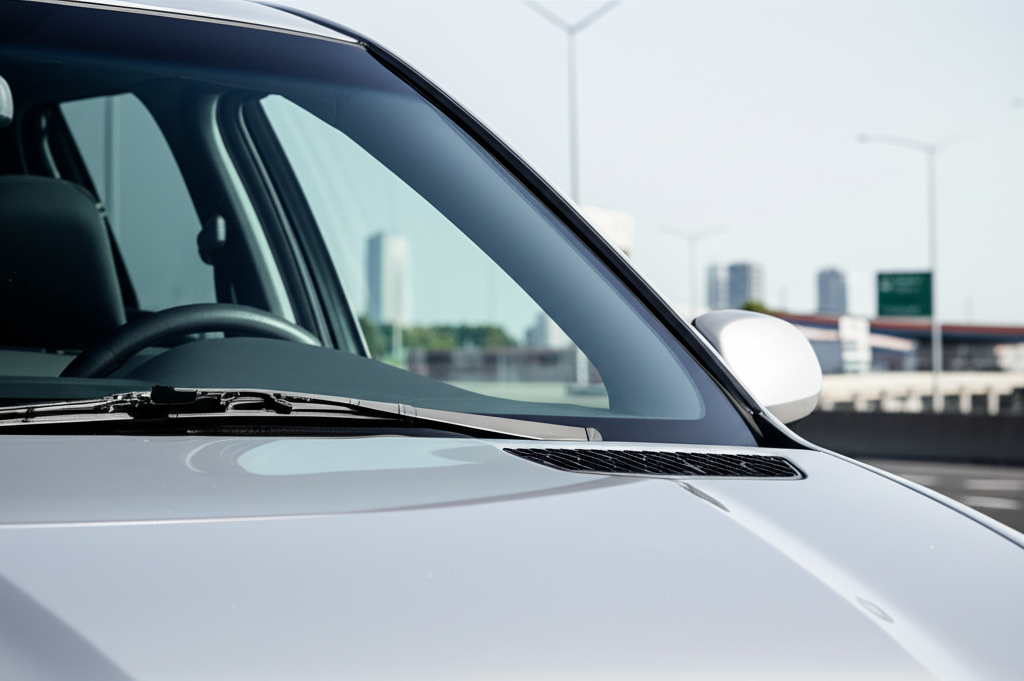
Now that you better understand the smart engineering behind your car’s wiper system, taking care of them is essential to ensure they function optimally. Regular maintenance is simple and can prevent costly damage and ensure you always have a clear view of the road ahead.
When to Replace Your Windshield Wiper Blades
Wiper blades are made of rubber and are exposed to harsh elements like UV rays, temperature fluctuations, salt, and road debris. Over time, this wears them down. Here are common signs that indicate it’s time for a replacement:
- Streaking: If the wipers leave behind streaks of water or dirt, the rubber may be worn or deformed.
- Skipping or Chattering: When the blades skip across the glass or make a chattering noise, the rubber might be hardened or the arm tension is off.
- Torn or Cracked Rubber: Inspect the rubber edge of the blade. Any nicks, tears, or visible cracks mean it’s time for new ones.
- Reduced Effectiveness: If you find yourself using them more often or they simply aren’t clearing the water effectively, they’ve likely reached the end of their lifespan.
- Visible Wear: The metal or plastic frame of the wiper arm might start to corrode or the blade itself appears visibly degraded.
As a general rule, most automotive experts, including those at AAA, recommend replacing wiper blades every 6 to 12 months. However, this can vary depending on your driving conditions and climate. For instance, if you frequently drive in areas with heavy snow, sand, or extreme heat, you might need to replace them more often.
Simple Steps to Extend the Life of Your Wipers
You can prolong the life of your existing wiper blades with a few simple practices:
- Clean Them Regularly: Gently wipe the rubber blades with a damp cloth or paper towel soaked in washer fluid. This removes grit and debris that can wear down the rubber.
- Use Washer Fluid, Not Just Water: As we discussed, specialized washer fluid cleans better and prevents freezing. Always keep your reservoir topped up.
- Avoid Running Wipers on Dry Glass: This can scratch the glass and quickly wear down the rubber blades. If dust or debris is on the windshield, use the washer fluid spray first.
- Lift Wipers in Extreme Weather: During heavy snow or ice storms, lifting your wiper arms away from the windshield can prevent them from freezing to the glass and getting damaged.
- Check Wiper Arm Tension: Ensure the wiper arms are pressing down firmly and evenly on the windshield. If an arm seems loose, a mechanic can often adjust or replace it.
Taking these small steps can ensure your wiper blades perform at their best, providing you with crucial visibility when you need it most. It’s a small maintenance task that offers significant safety benefits on any road across America.
Advanced Wiper Technology: Beyond Basic Rubber
The world of automotive technology is constantly evolving, and even something as seemingly simple as a windshield wiper blade has seen significant advancements. Modern wiper blades are engineered with sophisticated materials and designs to offer superior performance and durability compared to their predecessors.
Aerodynamic Designs for High-Speed Performance
Traditional wiper blades used articulated frames that held the rubber blade. While effective, these could sometimes lift off the windshield at high speeds due to wind resistance, leading to reduced wiping efficiency. The innovation that addressed this is the beam blade. Instead of a frame, a beam blade features a solid, tensioned steel strip that flexes to conform to the curvature of your windshield. This design offers several advantages:
- Even Pressure Distribution: The continuous tension of the steel strip ensures the rubber blade makes uniform contact with the glass across its entire length.
- Reduced Wind Lift: Their sleek, low-profile design reduces wind resistance, allowing them to hug the windshield even at highway speeds.
- Improved Aerodynamics: Many beam blades incorporate aerodynamic spoilers that further press the blade onto the glass when the vehicle is in motion.
These advancements are particularly important for drivers on the open highways of the USA, where maintaining clear visibility at 70 mph or more is paramount. Brands like Bosch, Michelin, and Rain-X offer high-quality beam blades that are a significant upgrade from older wiper technologies.
Innovative Materials for Enhanced Durability and Performance
The rubber used in wiper blades has also seen improvements. While natural rubber was once standard, many premium wiper blades now use synthetic rubber compounds or incorporate graphite or Teflon coatings. These materials offer:
- Greater Resistance to UV Rays: This prevents the rubber from degrading and cracking in the strong sunlight common in many parts of the USA.
- Smoother Wiping Action: Coatings reduce friction, leading to quieter operation and less streaking.
- Increased Durability: These advanced compounds can withstand extreme temperatures, both hot and cold, for longer periods without losing their effectiveness.
Some manufacturers even offer hybrid designs that combine the frame structure of traditional wipers with the aerodynamic qualities of beam blades, providing a balance of coverage and performance. The continuous innovation in wiper technology ensures that drivers have access to the best possible tools for maintaining clear visibility, a cornerstone of safe driving.
The Role of Wiper Systems in Advanced Driver-Assistance Systems (ADAS)
In today’s increasingly high-tech automotive landscape, windshield wipers are no longer just a manual function. They are becoming an integrated part of sophisticated Advanced Driver-Assistance Systems (ADAS) that help drivers navigate and stay safe. This integration highlights how even the simplest car components are evolving with modern automotive engineering.
Automatic Wipers and Rain Sensors
Many newer vehicles, particularly luxury and premium models, come equipped with automatic windshield wipers. These systems use tiny rain sensors, typically mounted on the windshield near the rearview mirror, to detect the presence and intensity of rain. When the sensors detect water droplets on the glass, they signal the car’s computer to activate the wipers. The system can then automatically adjust the speed of the wipers based on how hard it’s raining, ranging from intermittent sweeps for a light drizzle to continuous high-speed wiping in a downpour.
This hands-free operation is not just a convenience; it’s a significant safety feature. It allows drivers to keep their hands on the steering wheel and their eyes on the road, without the distraction of fumbling for wiper controls. For drivers in unpredictable weather regions of the USA, like the Pacific Northwest with its frequent rain, this feature provides an added layer of security and peace of mind. The integration of sensors and automatic control showcases how automotive technology is continuously working to enhance the driving experience and safety.
How Wipers Support Other ADAS Features
Beyond automatic activation, a clean windshield is absolutely critical for the proper functioning of many other ADAS features. Systems like:
- Forward Collison Warning (FCW)
- Automatic Emergency Braking (AEB)
- Lane Keeping Assist (LKA)
- Traffic Sign Recognition (TSR)
all rely on cameras and sensors that are often mounted behind the windshield. If the windshield is dirty, smudged, or covered in water droplets, these sensors and cameras can be obstructed, leading to reduced performance or outright failure of the ADAS features.
For example, a dirty windshield can prevent the camera from accurately reading traffic signs, leading to inaccurate speed limit information or a failure to detect stop signs. Similarly, a smudged windshield could impede the forward-facing camera’s ability to detect obstacles, potentially causing the FCW or AEB systems to malfunction. This underscores the importance of maintaining your windshield and ensuring your wiper blades are in good condition, not just for your direct visibility but also for the integrity of your vehicle’s advanced safety systems. Keeping your windshield clean is a fundamental aspect of ensuring all the advanced technology in your car works as intended.
Frequently Asked Questions About Car Wipers
How often should I replace my car’s wiper blades?
It’s generally recommended to replace your wiper blades every 6 to 12 months. However, this can vary based on climate, usage, and the quality of the blades. Signs like streaking, skipping, or noisy operation indicate it’s time for a change sooner.
Can I use plain water in my windshield washer fluid reservoir?
While you can use plain water in a pinch, it’s not recommended for long-term use. Plain water can freeze in colder temperatures, potentially damaging your system and leaving you without visibility. It also lacks the cleaning agents to effectively remove grime and road salt.
What’s the difference between a traditional wiper blade and a beam blade?
Traditional blades use a framed structure to hold the rubber. Beam blades, conversely, use a flexible, tensioned steel strip without a frame. Beam blades offer more even pressure distribution, better aerodynamics, and are less prone to wind lift at high speeds.
How do automatic wipers work?
Automatic wipers use rain sensors mounted on the windshield. These sensors detect water droplets and signal the car’s computer to activate the wipers at an appropriate speed based on the rain’s intensity. This feature enhances safety by allowing drivers to focus more on the road.
My wipers are making a squeaking noise. What could be the problem?
A squeaking noise can be caused by several factors: worn-out rubber blades, a hardened rubber compound, a dirty windshield, insufficient washer fluid, or an issue with the wiper arm’s spring tension. Cleaning the blades and windshield, ensuring sufficient fluid, or replacing the blades are the first steps to resolve this.
Are expensive wiper blades really worth the cost?
While basic wiper blades can be inexpensive, higher-quality blades, particularly beam blades with advanced rubber compounds, often offer superior performance, durability, and smoother operation. For drivers in harsh climates or those who prioritize maximum visibility, the added cost can be well worth it for enhanced safety and longevity.
How do I clean my wiper blades?
To clean your wiper blades, gently wipe the rubber edge with a damp cloth or a paper towel dipped in windshield washer fluid. This helps remove dirt and debris that can wear down the rubber and cause streaking. It’s best to do this whenever you notice them becoming dirty.
Your car’s wiper system is a fundamental yet sophisticated component essential for safe driving. From the dual blades designed for maximum coverage to the specially formulated washer fluid that prevents freezing and cuts through grime, these seemingly simple parts employ clever engineering. The evolution towards advanced beam blades and integrated ADAS technology further highlights their increasing importance. By understanding these smart facts and performing basic maintenance, you can ensure your wipers are always ready to provide the clear visibility you need, no matter the conditions on the road across the USA.

